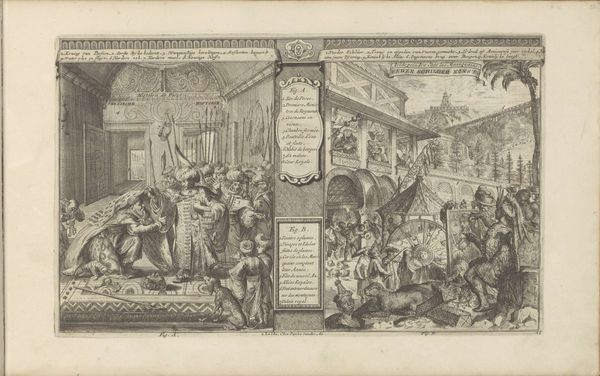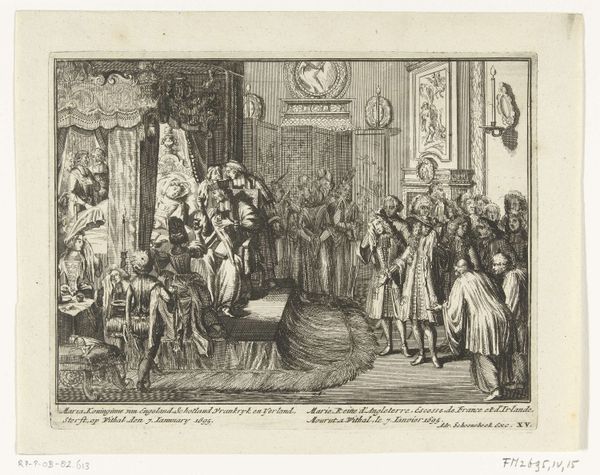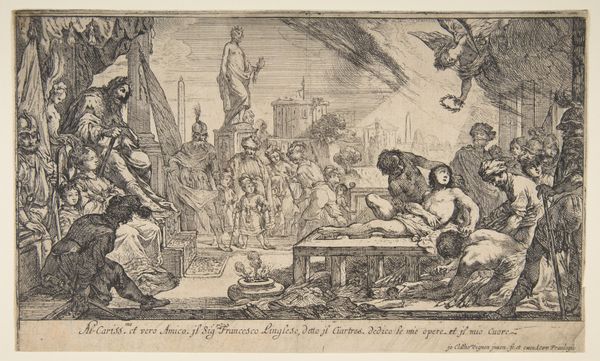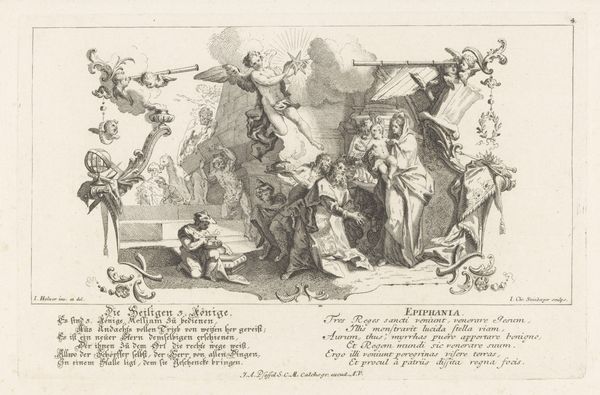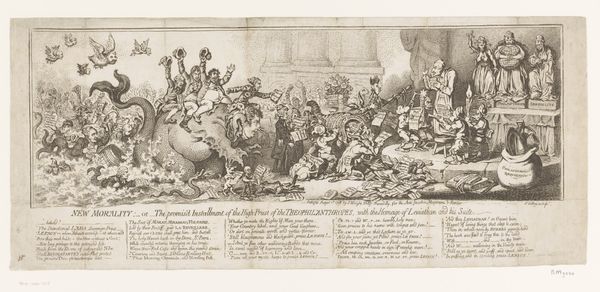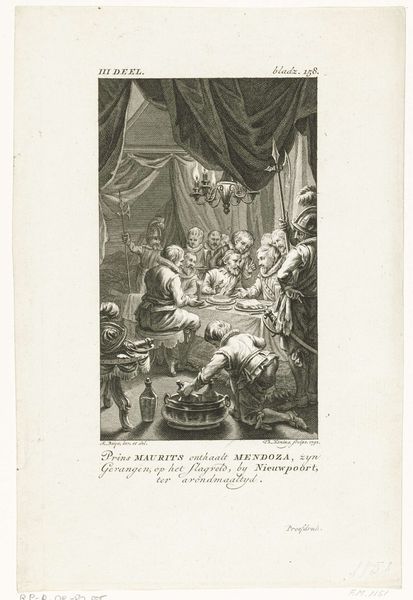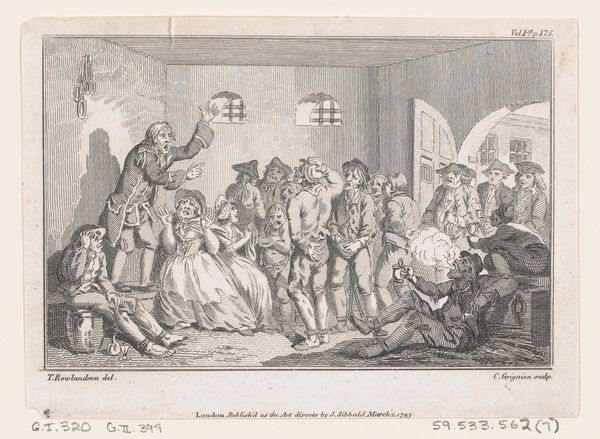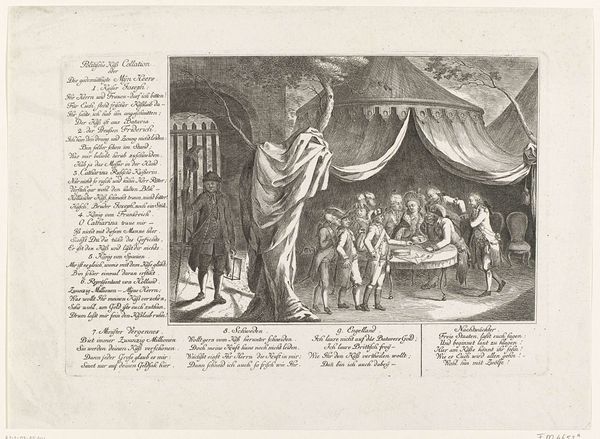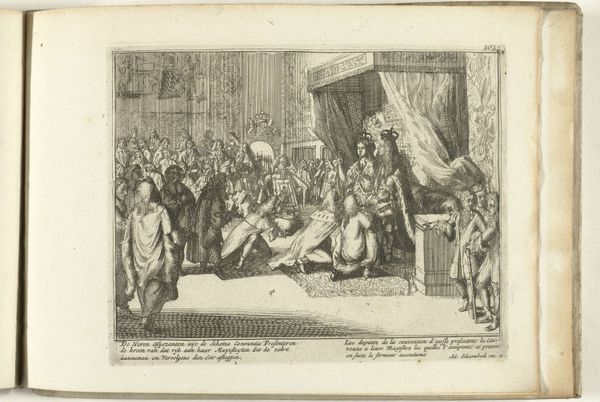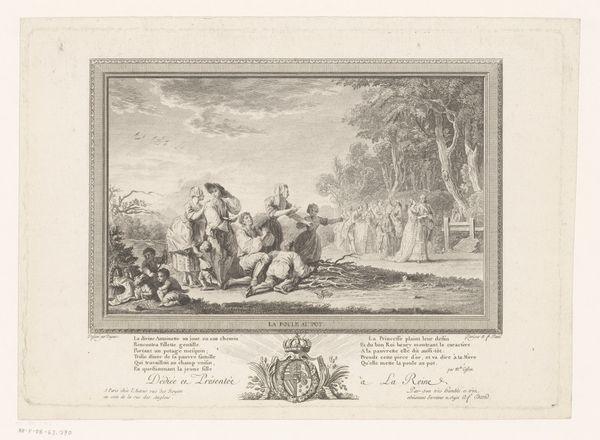
print, engraving
#
narrative-art
#
baroque
# print
#
old engraving style
#
figuration
#
history-painting
#
engraving
Dimensions: height 189 mm, width 295 mm
Copyright: Rijks Museum: Open Domain
Editor: This engraving, "Kindermoord te Bethlehem," or "Massacre of the Innocents" by Johann Christoph Steinberger, made sometime between 1719 and 1727... it's pretty intense. What stands out to me is the stark contrast between the violence and the almost decorative framing. How should we interpret it? Curator: Let's consider the materiality of the print itself. Engravings were often mass-produced. How does that impact our understanding of the subject matter, a horrific historical event used to project power? Was this intended as a purely propagandistic venture that circulated quickly in an age with high inequality and lower artistic and literacy access, and what biases would influence such an endeavour? Editor: That's interesting. So you're saying the very act of mass production normalizes the image? Curator: Perhaps "normalizes" isn't quite right. Instead, consider the commodification of violence. The engraving transforms suffering into a consumable product, accessible, but removed from the actual event. Who were the patrons for works like these? Did that affect the production of the plates themselves or their accessibility? The details may vary, but the processes of art creation and marketing are always material, embedded with the socioeconomics that make these objects, and therefore ideas, take shape. Editor: I hadn't considered it that way. I was so focused on the art historical or symbolic components! So, rather than a straightforward depiction of a historical event, we need to examine the forces – labor, money, material access – behind its creation and distribution? Curator: Precisely. Analyzing the materials, the mode of production, helps unveil layers of meaning that a purely formal analysis might overlook. Who profits? Whose stories get told, and whose get erased? It’s a vital shift in perspective that is particularly critical with a visual work illustrating a challenging history. Editor: Thanks, that was a super-interesting angle. Thinking about the economic impact and social context behind the print itself sheds a new light on its meaning. I will definitely see things from a different perspective going forward.
Comments
No comments
Be the first to comment and join the conversation on the ultimate creative platform.


